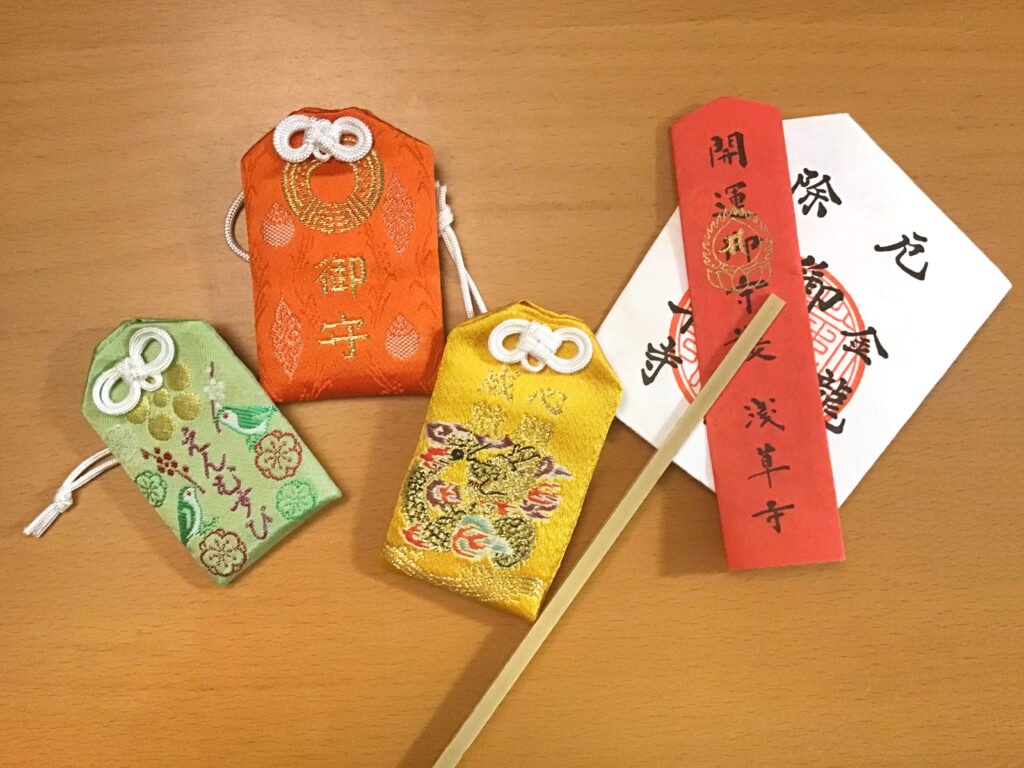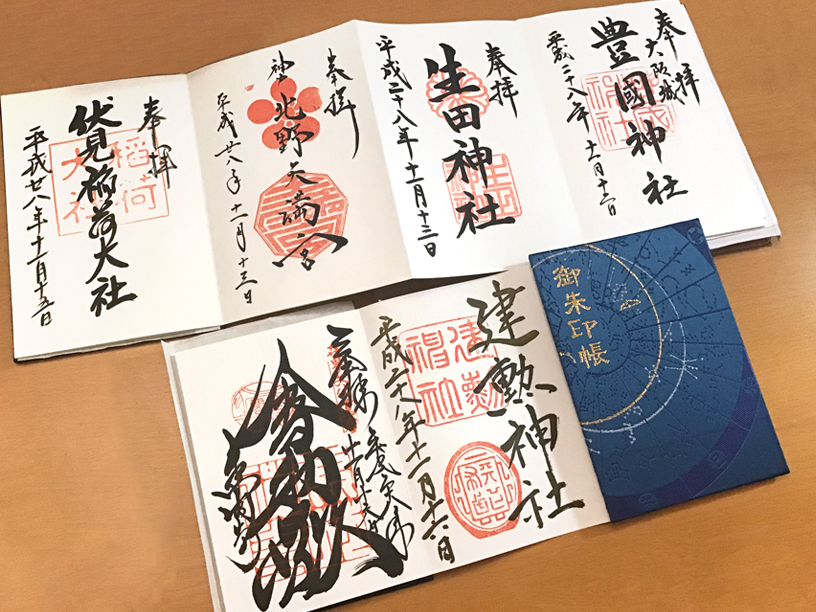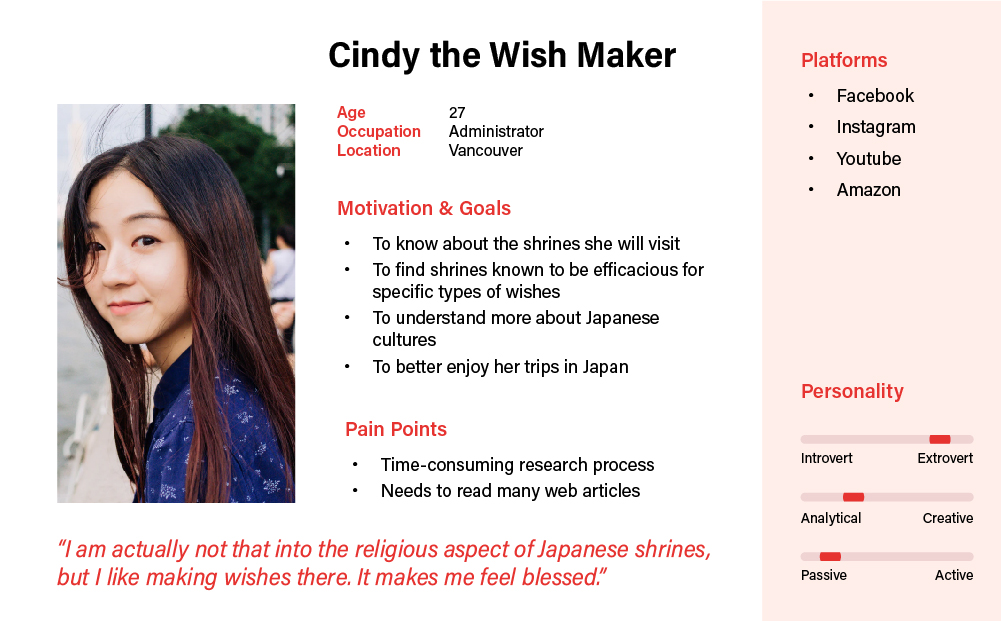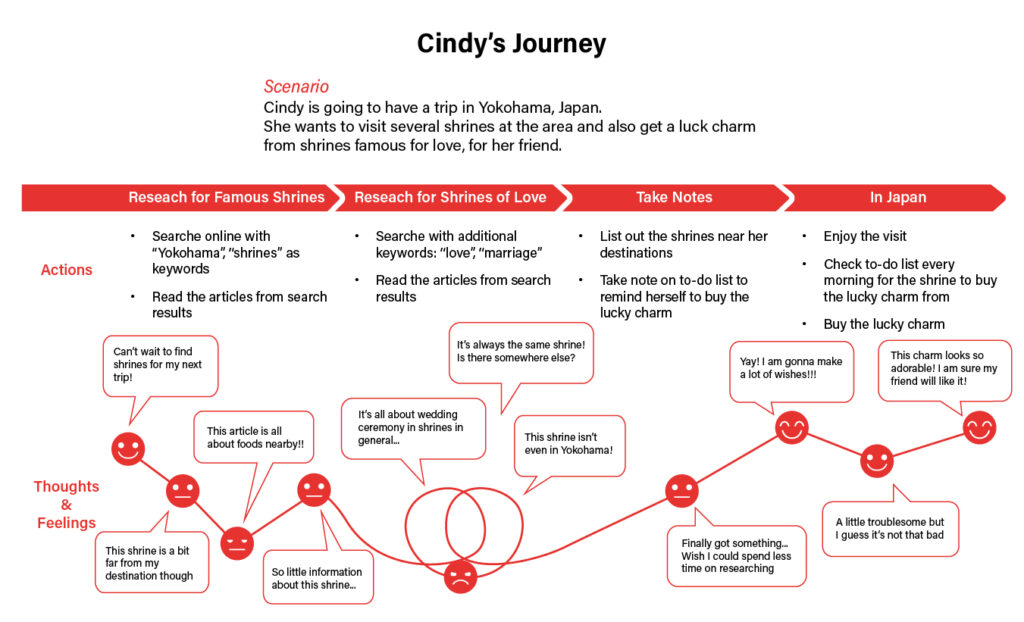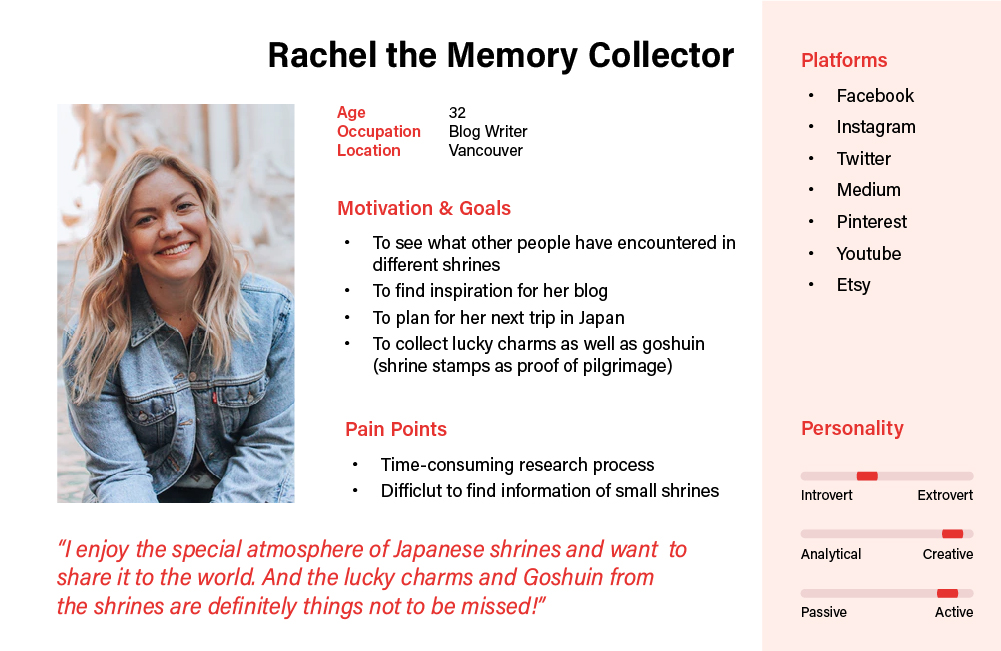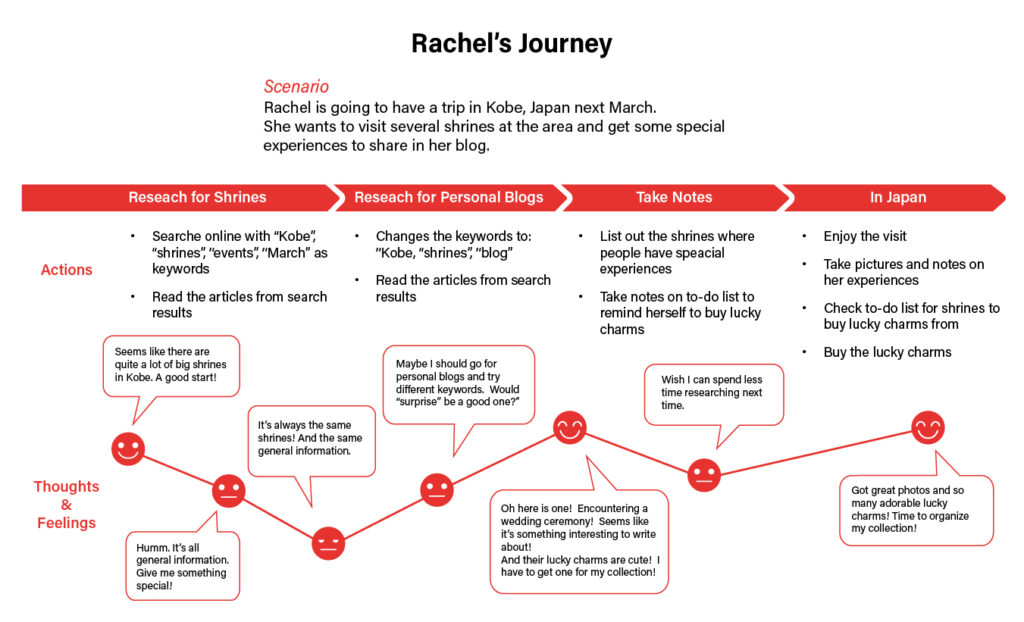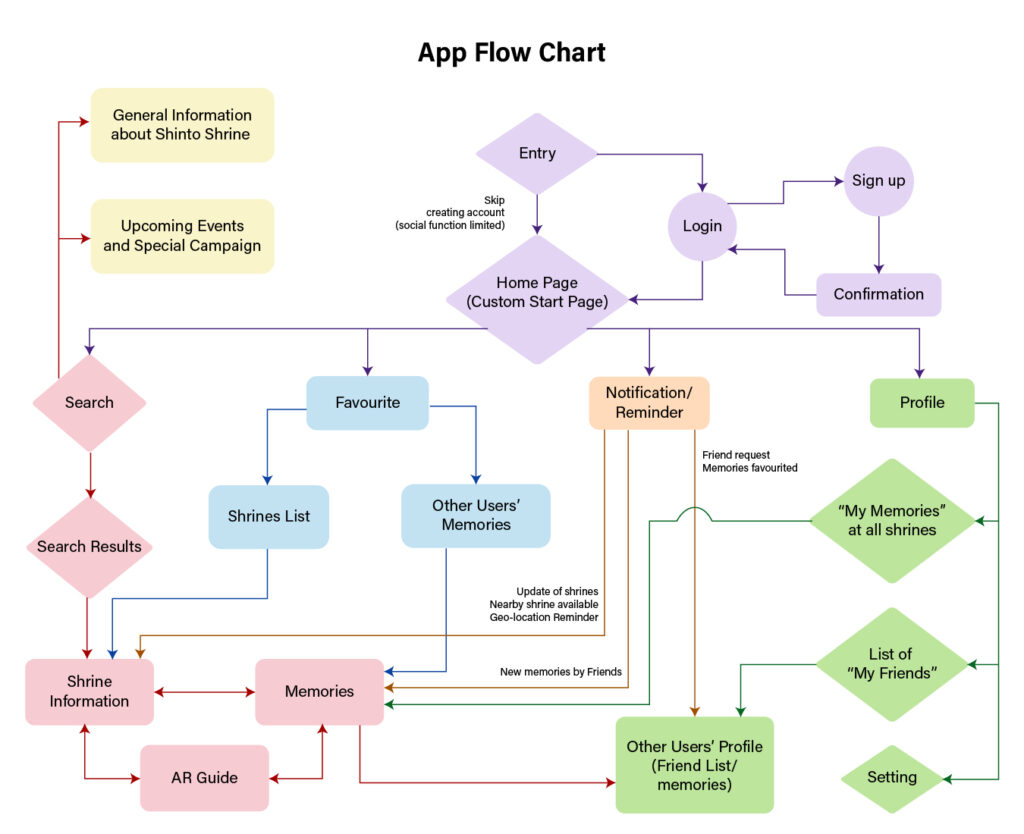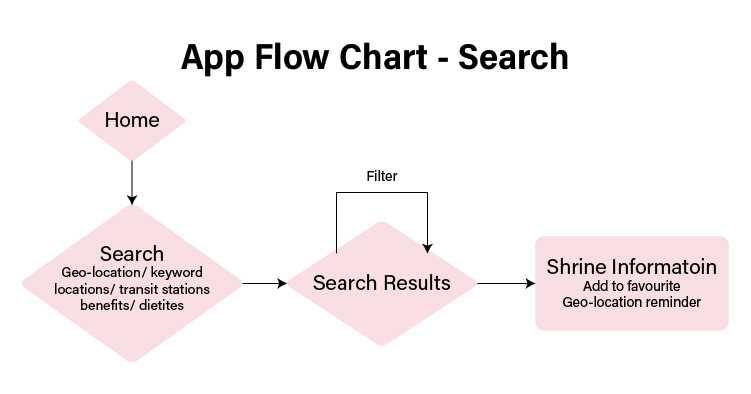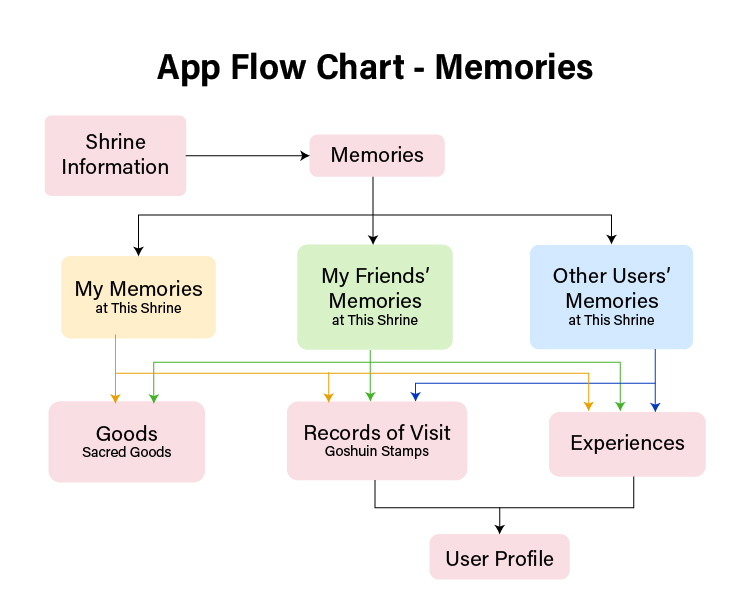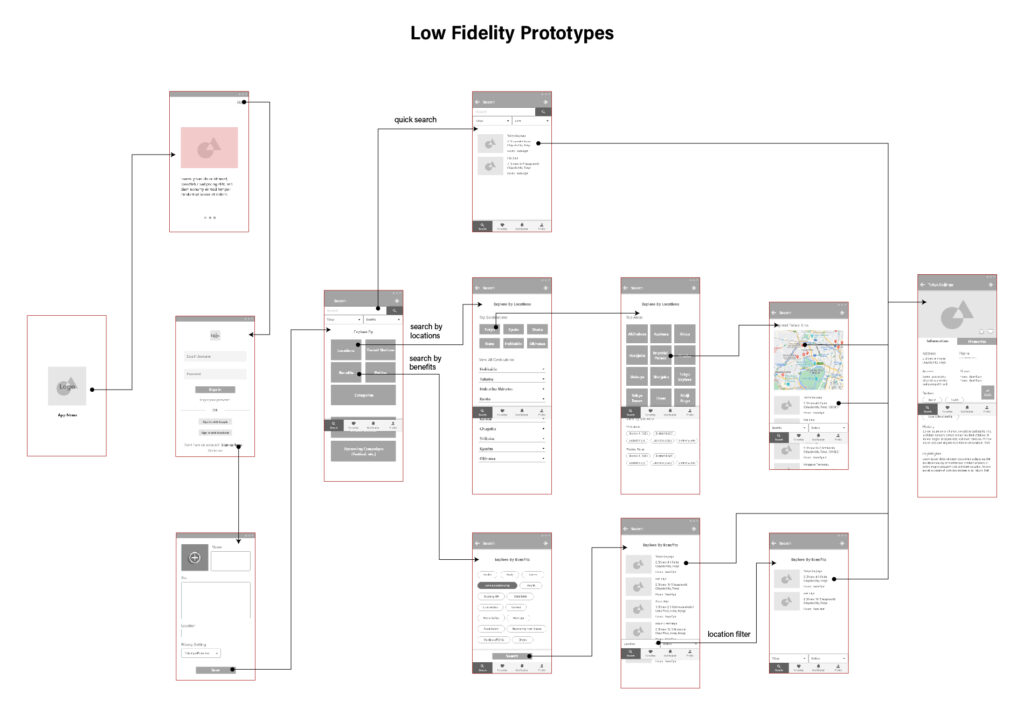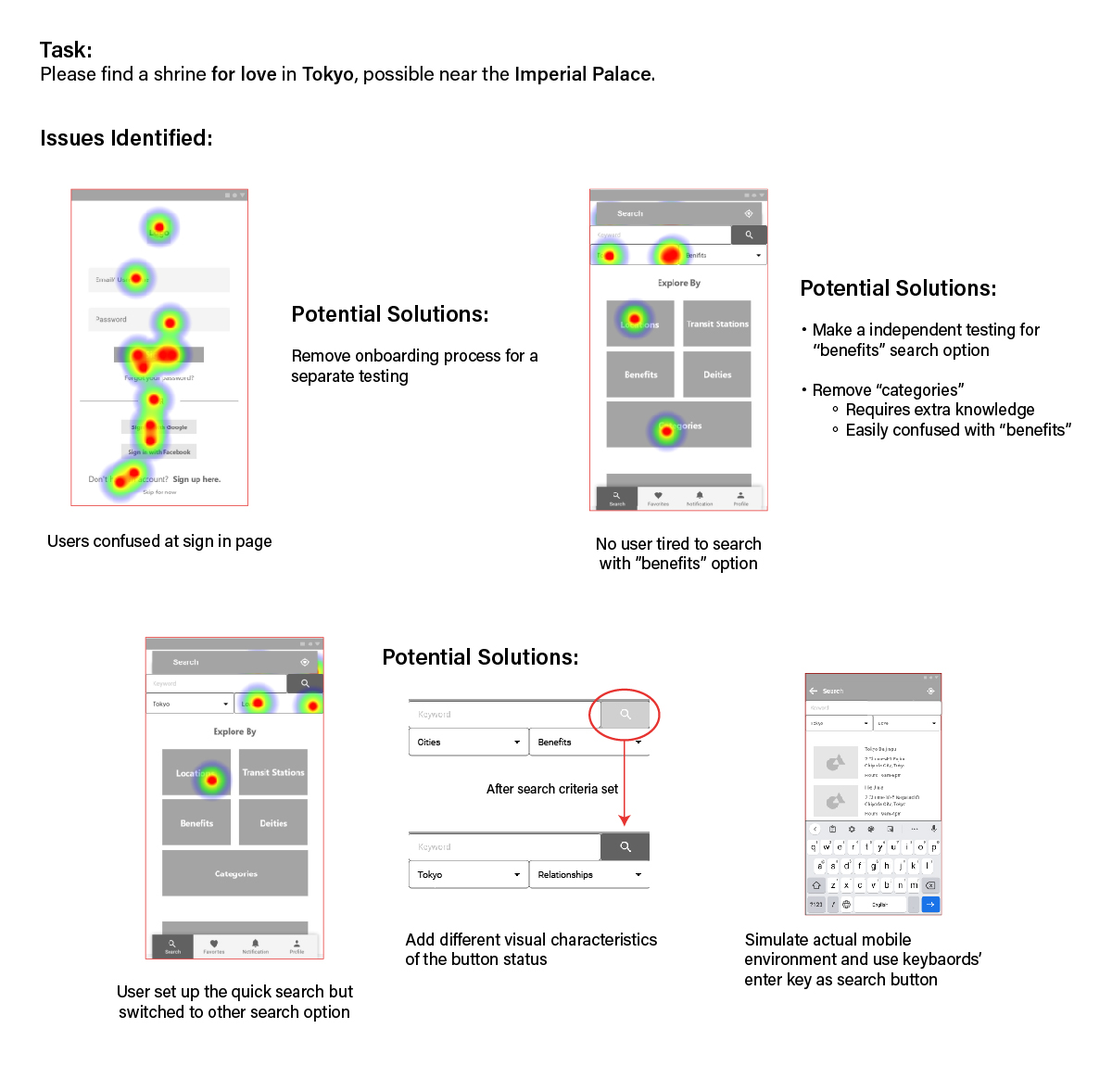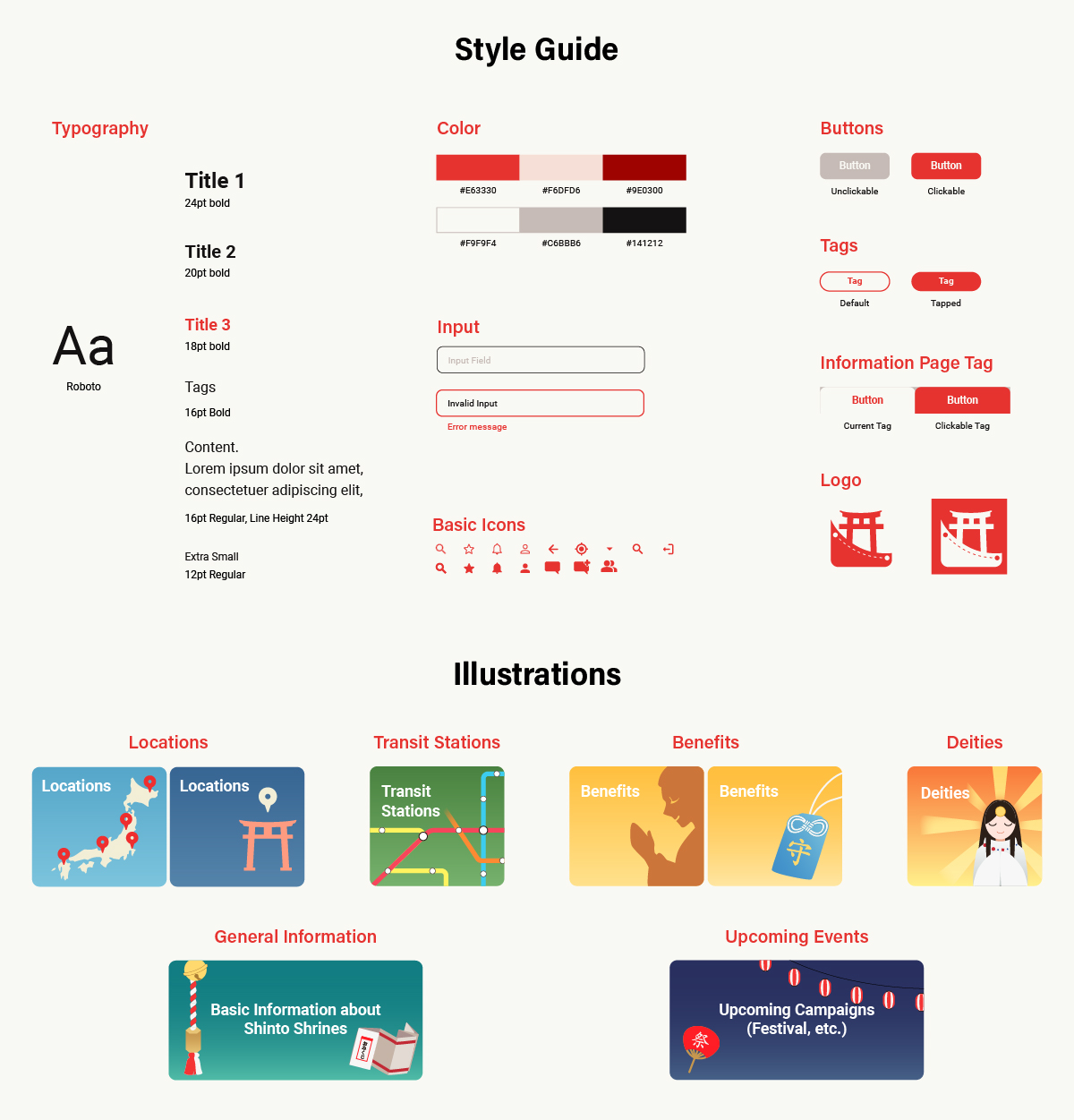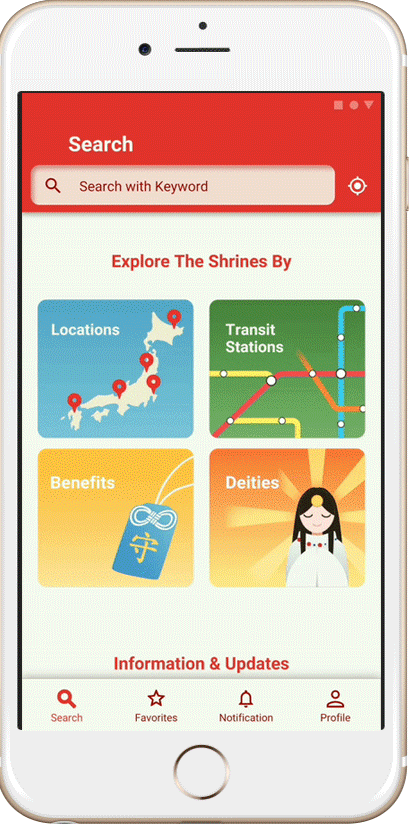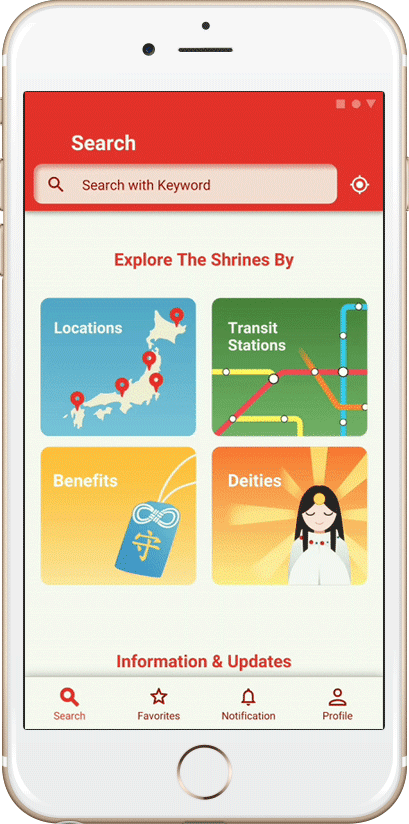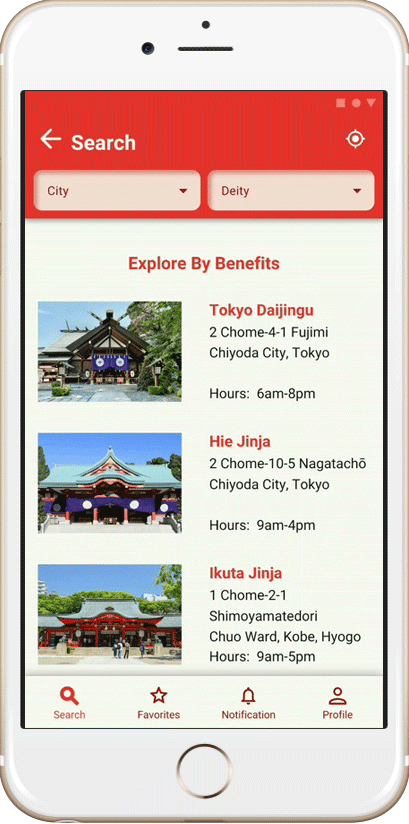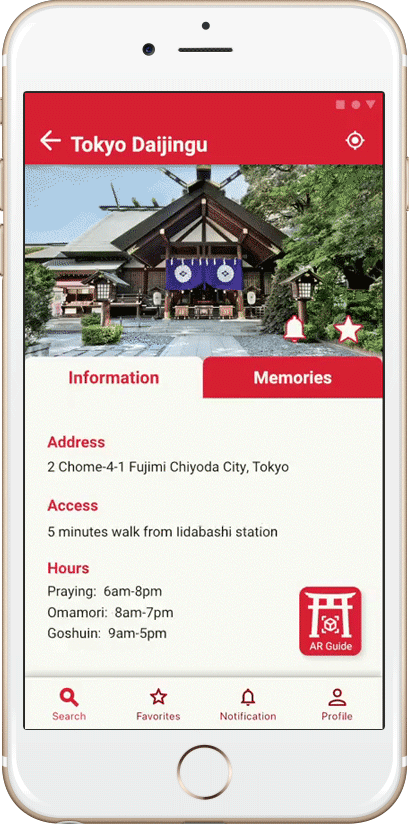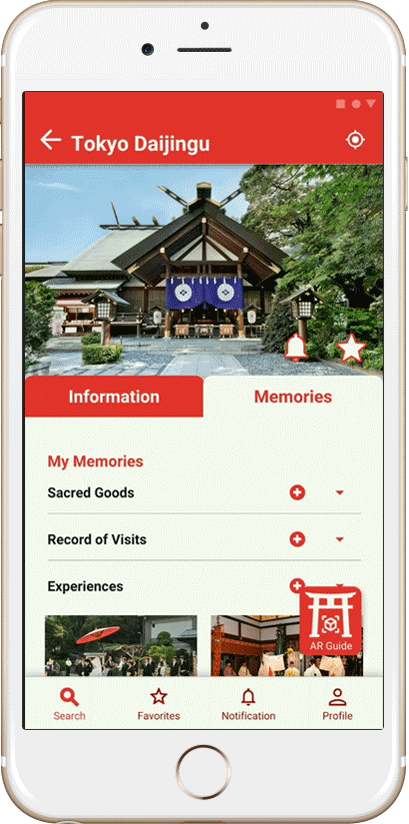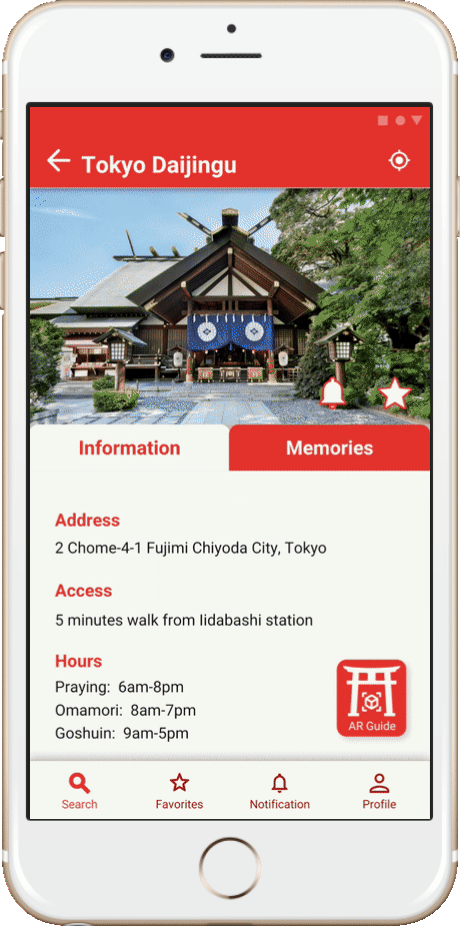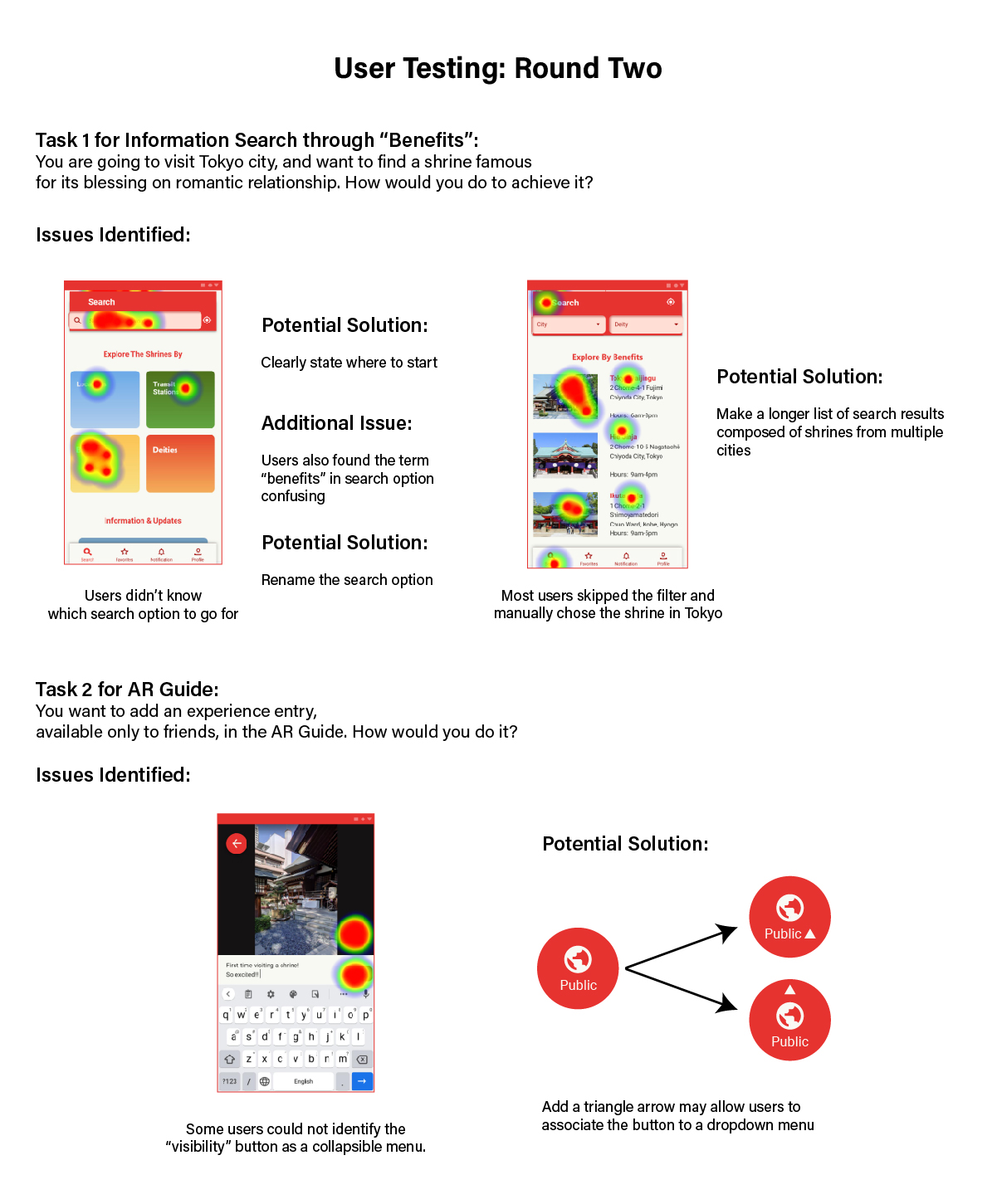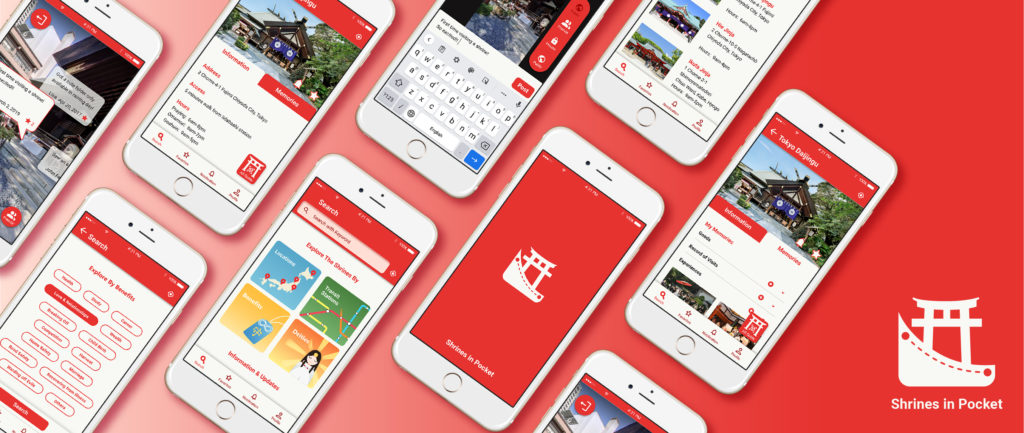
Shrines in Pocket
Shrines in Pocket is the first English travel guide app designed specifically for Japanese Shinto shrine visitors. With Shrines in Pocket, users can easily access the information of individual Shinto shrines, share their stories with fellow visitors, and explore others’ experiences to enhance their own.
Prototype Link ![]() Adobe XD Prototype
Adobe XD Prototype
Project Type ![]() Academic Project
Academic Project
Duration ![]() 5 Weeks
5 Weeks
Roles ![]()
- UX/UI
- Competitor Research
- User Research
- User Testing
Skills & Tools ![]()
- SWOT Analysis
- Survey, Persona
- Journey Map
- Wireframing
- Prototyping
- Digital Illustration
- Adobe XD
- Adobe Illustrator
Shrines in Pocket

About Shinto Shrines
Shinto shrines are places of worship and the dwellings of Japanese deities such as “kami” (gods) and historical figures. People visit shrines to pay respects and pray for good fortunes. Different shrines are thought to be efficacious for different types of wishes. For example, “Tenmangu” are popular among students who preparing for exams.
Visitors can purchase a range of sacred goods including “omamori” charm, “ofuda” (paper talisman) and obtain “goshuin” (stamps as proof of pilgrimage) unique to each shrine. Collecting “goshuin” is now a trend among shrine lovers.
The Challenge
Shinto Shrines have always been a fascinating part of Japanese culture and a unique tourist attraction. However, as a shrine lover myself, I always find the fragmentary information resources online makes it difficult to search about specific shrines and keeps me away from understanding more about the destinations.
How might we help foreign travelers to access comprehensive information of individual Shinto shrines with the least amount of time and efforts?
Discover
Brainstorming
As I have some basic knowledge of Shinto shrines, I started with writing down all the functions and features I can think of, and organized them based on relationships. I also discussed with my classmates for more inspiration.
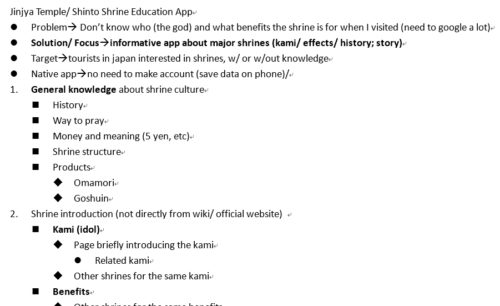
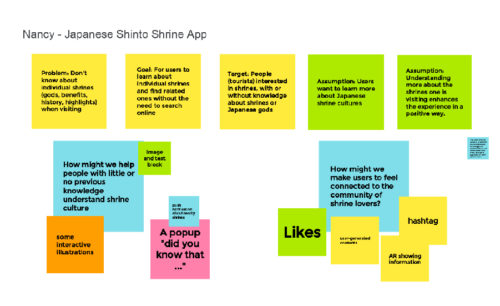
Assumption
- Users do not want to conduct in-depth research on individual shrines
- Understanding about individual shrines enhances the travel experience
Target Users
- want to know about Japanese Shinto shrines
- are planning to visit, or are already at a Shinto shrine
- enjoy making wishes and visit shrines as tourist attractions
- have little or no previous knowledge about Japanese Shinto shrine culture
Research
Competitor Analysis
To obtain a basic picture of my app design, I researched for websites and mobile apps that serve the same or similar purpose. Unfortunately, all English pages introducing Shinto shrines are either for the culture in general, or blog posts for individual popular shrines.
On the other hand, there are Japanese official websites that list out all the shrines in the district, as well as platforms that allow users to share their experiences in individual shrines. However, all of them are only in Japanese and require users to have a basic knowledge in Shinto culture and Japanese history.
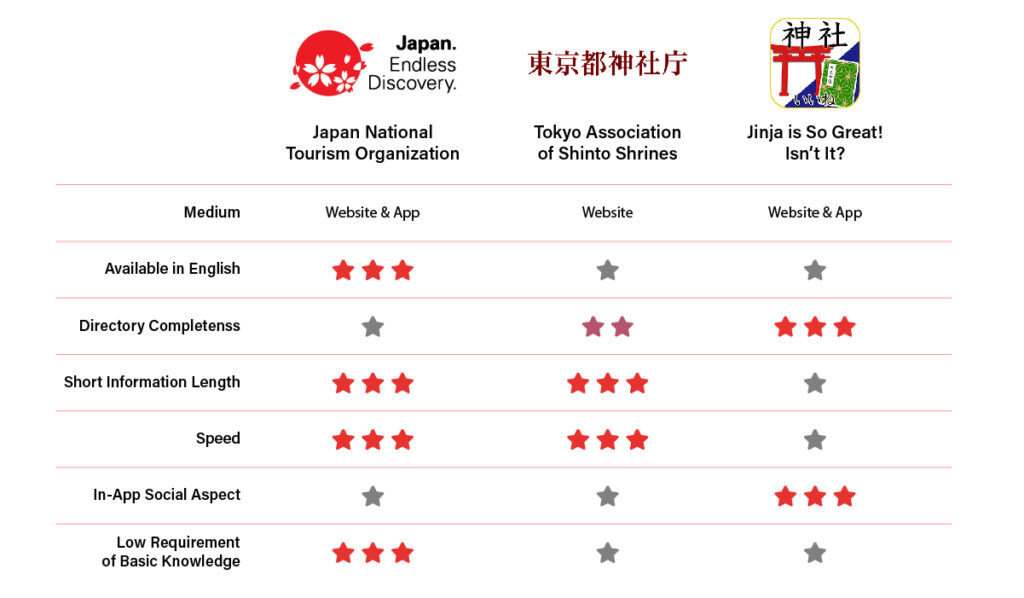
User Research
As targeting users who are interested in Shinto shrines may be too specific and difficult to achieve in the current situation, I made my survey questions related to researching on travel attractions in general, and obtained the following key findings:
Difficulties Encountered
During Researches
- a lack of background information
- language barrier
- bad information formatting
Desired Information
- basic information
- rules to follow
- event schedules
- other visitors’ experiences
- make connection
- prepare for possible troubles
- similar tourist attractions nearby if available
Define
Redefining the Challenge
As the users stated that in addition to basic information, other visitors experiences are also valuable for building a more comprehensive connection to the tourist attractions, I rephrased my design problem statement:
How might we help foreign travelers to access comprehensive information of individual Shinto shrines, and connect to the shrines through fellow visitors’ experiences, with the least amount of time and efforts?
User Personas & Journey Maps
With the above gathered responses, I decided on the two main features of my app: information search and experience sharing. I made a persona for each of them, and created relevant journey maps to illustrate the paths they would usually take.
Iteration
Prototyping & Testing
I made a low fidelity prototype of the search system containing two of the four possible paths, and an onboarding section for user testing. User testing was conducted at an online environment to record user behaviors. In order to avoid distraction, I provided minimal instructions and allow users to choose their path freely.
Visual Design
I moved on to build a style guide to finalize the visual elements of the app. I chose red with a tint of orange as the primary color to resemble the Torii gate of the shrines, with off-white and off-black to decrease visual contrast. I also created illustrations that are in a simple fashion to match the clean style of the app. Some illustrations have multiple versions for me to select the best fitting one afterward.
Second Prototyping
With all the elements in hand, I made the high fidelity prototype based on the style guide. This time I decided to focus on the “benefits” option as it is a special characteristic of Shinto shrine.
High Fidelity Prototype
Shrine Information
for basic information and event schedules
Memories Management
to manage user’s sacred goods, record of visit and special experiences, and also to view other visitors’ memories.
Reflection
Takeaways
- Choose the commonly used options
- I was struggling with creating filter list within limited space, and I ended up including only major cities as I realized that those are where most travelers tend to visit. If the users would like to find a complete list of Japanese cities, they have the option to start their search by locations.
- I was struggling with creating filter list within limited space, and I ended up including only major cities as I realized that those are where most travelers tend to visit. If the users would like to find a complete list of Japanese cities, they have the option to start their search by locations.
- Keep in mind the background knowledge the app requires
- At first, the location search function only had lists of Japanese prefectures and cities, but I realized that it would require the users to have the knowledge of Japanese geography. Therefore I did a research on other websites’ strategies and ended on adding a section on the top of the page with lists of popular cities and areas which foreigner travelers are probably more familiar to.
- At first, the location search function only had lists of Japanese prefectures and cities, but I realized that it would require the users to have the knowledge of Japanese geography. Therefore I did a research on other websites’ strategies and ended on adding a section on the top of the page with lists of popular cities and areas which foreigner travelers are probably more familiar to.
- Watch out for the wording differences between authority and target users
- As the users pointed out, the term “benefits” is somewhat inaccurate in the context. I had looked into other terms such as “wishes”, “prayers”, etc., but chose “benefits” because it was often used in Japanese websites. However it turned out to be misleading to Western users.
Opportunities for Future Development
As mentioned in the previous session, extra research on wording used in the app is required. I would also like to build on the “memories” function to make it more complete, and make use of the phones’ gyroscope sensor to allow for direction-specific message in the AR guide.
The branding elements and UI motions are also parts I would like to further explore.
